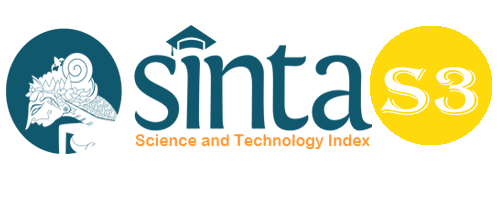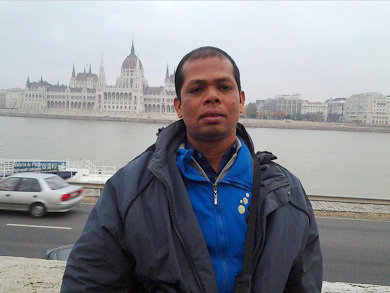Audience Perception of Forwarded Covid-19 Messages on Facebook and WhatsApp as Triggers of Misinformation
Abstract
Misinformation is a problem that is much more prevalent in the social media than the traditional media. The social media is a sphere where individuals are both producers and consumers of information and so because of this a lot of information sent out during the Covid pandemic were sometimes misleading as individuals who sent out these messages have little or no regard for journalistic ethics. The impact of the covid-19 pandemic cannot be overlooked due to the flood of information that was spread about on the social network which could be false or true. The aim of the study is to find out if audiences consider the Covid-19 information from WhatsApp and Facebook as being credible and identify the perception of the audience on forwarded messages on Covid-19. The study adopts the Source Credibility as theoretical framework. The survey research method was adopted using questionnaire as the research instrument. The sample size for this study was 400 respondents selected from the total number of the population in Ikorodu; Maya and Ijede as study areas and only a total of 383 were collated and analyzed. The study used the stratified sampling technique. The findings show that majority of the audience make use of social media a lot and that during the Covid-19 pandemic they majorly got information from their social networks most especially WhatsApp, Twitter and Facebook and findings revealed that audience considers all Covid-19 related messages on their Facebook and WhatsApp pages credible enough and are likely to forward them but in the intent to inform and not deceive. This study recommends that users of social media should properly verify information before forwarding them as this will ensure that the problem of misinformation is curbed in order to avoid individuals making agitated decisions regarding their health as regards the Covid-19 pandemic and other issues arising.
Keywords
Full Text:
PDFReferences
Ademosu, I. & Oyeleye, S.A. (2019). Social Media and Polarization in Nigeria: Analysis of Responses to Selected Media Influencers’ Conversations on Diverse Issues on Twitter.
African Renaissance Books Incorporated. ISBN: 978-0-9801626-1-5
Anaeto, S., Onabajo, O.S., & Osifeso, J.B. (2008). Models and Theories of Communication.
Aondover, E. M., Yar’Adua, S. M., & Aondover, P. O. (2025). Influence of Digital Images on the Propagation of Fake News on Twitter in Russia and Ukraine Crisis. Budapest International Research and Critics Institute-Journal (BIRCI-Journal), 8(1), 59-74.
Aondover, P. O., Aondover, E. M., & Babele, A. M. (2022). Two nations, same technology, different outcomes: Analysis of technology application in Africa and America. Journal of Educational Research and Review, 1(1), 001-008.
Bapaye, J., & Bapaye, H. (2020). Impact of WhatsApp as a source of misinformation for the novel coronavirus pandemic in a developing country: Cross- sectional questionnaire study. JMIR Public Health Surveill.
Barbera, P. (2018). Explaining the spread of misinformation on social media: Evidence from the 2016 US presidential election. P. 1. Retrieved from http://pablobarbera.com/static/barbera-CP-note.pdf
Baudhin, S., & Davis, M. (1972). Scales for the measurement of ethos: Another attempt, Speech Monographs, 39: 4, 296-301, DOI: 10.1080/03637757209375769
Evanega, S., Lynas, M., Adams, J., & Smolenyak, K. (2020). Coronavirus misinformation quantifying sources and themes in the Covid 19 ‘infodemic’. JMIR Preprints 19(10). https://allianceforscience.cornell.edu/wp-content/uploads/2020/10/Evanega-et-al- Coronavirus-misinformation-submitted_07_23_20-1.pdf
Grinberg, D. B. (2018). Why Traditional Media Still Matters In Today’s Digital Age. New York. Retrieved from https://dbgrinberg.medium.com/why-traditional-media-still-matters-in- todays-digital-age-f81350674e2f
Hall, M. (2021, November 9). Facebook. Encyclopedia Britannica. https://www.britannica.com/topic/Facebook
Hasim, W., Hidayat, M., Hamzah, A., & Nuraeni, N. (2019). Reading and sharing WhatsApp forwarded messages. ICBLP 2019, February 13-14, Sidoarjo, Indonesia. http://dx.doi.org/10.4108/eai.13-2-2019.2286093
Hile, M. M., Msughter, A. E., & Babale, A. M. (2022). A Public Health Communication: Towards Effective Use of Social Marketing for Public Health Campaigns in Nigeria. Ann Community Med Prim Health Care, 5(1), 1002. http://doi:10.5829/idosi.mejsr.2014.22.04.21945
http://eprints.covenantuniversity.edu.ng/15382/1/Pages%20from%20OMOTOLA%20NE JO%20FINAL%20PROJECT%20-%2019PBE01929.pdf
Hudson, M. (2019). What is Social Media? Retrieved from https://www.thebalancesmb.com/what-is-social-media-2890301 Journal of Scientific research, 22(4), 609.
Kamar, S., & Shah, N. (2018) False Information on Web and Social Media. Vol 1 https://doi.org/10.1145/nnnnnnn.nnnnnnn
Kurfi, M. Y, Aondover, E. M. & Mohammed. I. (2021). Digital Images on Social Media and Proliferation of Fake News on Covid-19 in Kano, Nigeria. Galactica Media: Journal of Media Studies, 1(1), 103-124. Doi: https://doi.org/10.46539/gmd.v3i1.111.
Lagos State Bureau of Statistics (2019). Valid Data. Retrieved from http://www.mepd.lagosstate.gov.ng/ibs-publication/
Maiwada, A. A., Aondover, P. O., Adewale, O. C., Falobi, F., & Onyejelem, T. E. (2025). Public Relations and Media Role in Peace Building in Nigeria. Budapest International Research and Critics Institute-Journal (BIRCI-Journal), 8(1), 45-58.
McCroskey, J. (1958). Scales for measurement of ethos. Speech monographs, 33, 67-72.
Msughter, A. E., & Phillips, D. (2020). Media framing of COVID-19 pandemic: A study of daily trust and vanguard newspapers in Nigeria. International Journal of Health, Safety and Environment (IJHSE), 6(5), 588-596.
Nejo, O. (2021). Covid-19 Infodemic: Media Literacy & Perception of Fake News Among Residents of Ikeja, Lagos state. Retrieved from
Nyilasy, G. (2020). Fake news in the age of Covid-19. Retrieved from https://pursuit.unimelb.edu.au/articles/fake-news-in-the age-of-covid-19
Onabajo, O. (2010). Foundations of Communication Research. Sibon Books Limited. p. 9-127 ISSN 978-8012-73-6
Onyejelem, T. E., Aondover, P. O., Maradun, L. U., Chime-Nganya, C. R., & Akin-Odukoya, O. O. (2024). Media and Pictorial Reportage of Boko Haram Insurgency in Nigeria. Konfrontasi: Jurnal Kultural, Ekonomi dan Perubahan Sosial, 11(4), 287-299.
Onyemelukwe, C. (2020). Covid 19, Misinformation and the Law in Nigeria. Retrieved from https://blog.petrieflom.law.harvard.edu/2020/08/19/misinformation-disinformation- covid19-nigeria-law/
Oreoluwa, P. A., Vitalis, P. O., Nneka, A. Q., Collins-Dike, J., & Ridwan, M. (2024). Online Harassment of Female Journalist in Lagos State. Polit Journal Scientific Journal of Politics, 4(3), 162-174.
Pahwa, A. (2020). The History of WhatsApp. Retrieved from https://www.feedough.com/history-of-whatsapp/
Pennycook, G. & Rand, D. (2020). Who falls for fake news? The roles of bullshit receptivity, overclaiming, familiarity and analytic thinking. Journal of Personality, 88(2), 185-200. https://doi.org/10.1111/jopy.12476
Potnis, D., Gala, B., & Deosthali, K. (2020). Investigating “message forwarding behavior” of mobile phone users: Exploring the link between message content, user sentiment, and user intention to forward messages on social media-based instant messaging platforms. First Monday, 25(8). https://doi.org/10.5210/fm.v25i8.10651
Rajendran, L., & Thesinghraja, P. (2014). The Impact of New Media on Traditional Media.
Rimskii, V. (2011) The Influence of the Internet on Active Social Involvement and the Formation and Development of Identities, Russian Social Science Review, 52(1), 79-101, http://doi:10.1080/10611428.2011.11065416
Ritholz, B. (2010). History of Social Media. Retrieved from https://ritholtz.com/2010/12/history- of-social-media/
Statista. (2021). Most popular social networks worldwide as of January 2021, ranked by number of active users. Retrieved from https://www.statista.com/statistics/272014/global-social- networks-ranked-by-number-of-users/
Sulaiman, K., Adeyemi, I. & Ayegun, I. (2020). Information Sharing and Evaluation as Determinants of Spread of Fake News on Social Media among Nigerian Youths: Experience from Covid 19 Pandemic. Journal of knowledge Content Development & Technology 10(4): 65-82. https://doi:10.5865/IJKCT.2020.10.4.065
Surahio, F.A., Mahar, J.A., & Jumani, A.K. (2016). Concurrent approach of forwarding messages using WhatsApp. Retrieved from https://www.academia.edu/27153556/Concurrent_Approach_of_Forwarding_Messages_ Using_WhatsApp
Umoh, M. & Umana, G. (2020). Covid-19 Pandemic: Combating Social Media Misinformation in Nigeria. Journal of Eminent Scholar 6(1). Retrieved from https://www.globalacademicstar.com/download/article/1786390587.pdf
Usman, B., Eric Msughter, A., & Olaitan Ridwanullah, A. (2022). Social media literacy: fake news consumption and perception of COVID-19 in Nigeria. Cogent Arts & Humanities, 9(1), 2138011.
Usman, B.B., & Kumar, R.(2020). Perspectives and Impacts of Social media fake news and misinformation narratives about Coronavirus in India. Journal of Humanities and Social science. 25(7): 62-66. ISSN: 2279-0837
Vitalis, P. O., Amadi, R. N., & Whyte, D. H. (2024). Social Construct of Nollywood Films and Ethnocentrism in Southern Nigeria. CINEJ Cinema Journal, 12(2), 152-179.
Vitalis, P. O., Onyejelem, T. E., & Okuneye, A. P. (2023). Understanding advertising in the era of social media. Information System and Smart City, 3(1), 502-502.
DOI: https://doi.org/10.33258/birci.v8i3.8105
Article Metrics
Abstract view : 0 timesPDF - 0 times
Refbacks
- There are currently no refbacks.

This work is licensed under a Creative Commons Attribution-ShareAlike 4.0 International License.

This work is licensed under a Creative Commons Attribution-ShareAlike 4.0 International License.

_.gif)

















_.gif)



